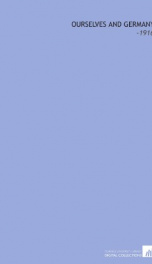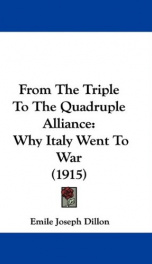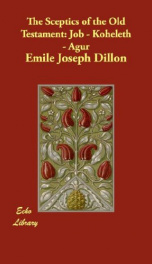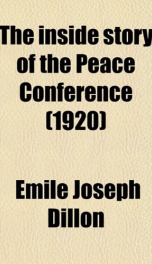Dillon Emile Joseph

William Morris Hughes, CH, KC (25 September 1862 – 28 October 1952), Australian politician, was the seventh Prime Minister of Australia, the longest serving member of the Australian Parliament, and one of the most colourful figures in Australian political history. Over the course of his 51 year federal parliamentary career (and an additional 7 prior to that in a colonial parliament), Hughes changed parties five times: from Labor to National Labor to Nationalist to Australian to United Australia to Liberal, was expelled from two, and represented four different electorates in two states. William Morris Hughes was born in Pimlico, London on 25 September 1862 of Welsh parents. His father William Hughes was Welsh speaking and, according to the 1881 census, born in Holyhead, Anglesey, North Wales in about 1825. He was a deacon of the Particular Baptist Church and by profession a joiner and a carpenter at the House of Lords. His mother was a farmer's daughter from Llansaintffraid, Montgomeryshire and had been in service in London. Jane Morris was thirty seven when she married and William Morris Hughes was her only child.[1] After his mother's death when he was seven William Hughes lived with his father's sister in Llandudno, Wales, also spending time with his mother's relatives in rural Montgomeryshire, where he also spoke Welsh. A plaque on a guest house in Abbey Road Llandudno bears testament to his residency. When he was 14 he returned to London and worked as a pupil teacher. In 1881, when he was 19, William lived with his father and his father's elder sister Mary Hughes at 78 Vauxhall Bridge Road, London. In October 1884 he migrated to Australia, and worked as a labourer, bush worker and cook. He arrived in Sydney in 1886 and lived in a boarding house in Moore Park and established a common law marriage with his landlady's daughter, Elizabeth Cutts.[2] In 1890 they moved to Balmain where he opened a small mixed shop, where he sold political pamphlets, did odd jobs and mended umbrellas. He joined the Socialist League in 1892 and became a street-corner speaker for the Balmain Single Tax League and an organiser with the Australian Workers' Union and may have already joined the newly formed Labor Party.[1] In 1894, Hughes spent eight months in central New South Wales organising for the Amalgamated Shearers' Union and then won the Legislative Assembly seat of Sydney-Lang by 105 votes.[3][1] While in Parliament he became secretary of the Wharf Labourer's Union. In 1900 he founded and became first national president of the Waterside Workers' Union. During this period Hughes studied law, and was admitted as a barrister in 1903. Unlike most Labor men, he was a strong supporter of Federation. In 1901 Hughes was elected to the first federal Parliament as Labor MP for West Sydney. He opposed the Barton government's proposals for a small professional army and instead advocated compulsory universal training.[1] In 1903, he was admitted to the bar after several years part time study. His wife died in 1906, and his 17-year-old daughter raised his other five children in Sydney. In 1911, he married Mary Campbell.[2] He was Minister for External Affairs in Chris Watson's first Labor government. He was Attorney-General in Andrew Fisher's three Labor governments in 1908-09, 1910-13 and 1914-15.[1] He was the real political brain of these governments, and it was clear that he wanted to be leader of the Labor Party. But his abrasive manner (his chronic dyspepsia was thought to contribute to his volatile temperament) made his colleagues reluctant to have him as Leader. His on-going feud with King O'Malley, a fellow Labor minister, was a prominent example of his combative style. Following the 1914 election, Labor Prime Minister of Australia Andrew Fisher found the strain of leadership during World War I taxing, and faced increasing pressure from the ambitious Hughes, who wanted Australia to be recognised firmly on the world stage. By 1915 Fisher's health was suffering, and in October he resigned and was succeeded by Hughes. Hughes was a strong supporter of Australia's participation in World War I, and after the loss of 28,000 men in July and August of 1916, Generals Birdwood and White of the Australian Imperial Forces (AIF) High Command persuaded Hughes[4] that conscription was necessary if Australia was to sustain its contribution to the war effort.[5] However a two thirds majority of his party, which included Roman Catholics and Union representatives as well as the Industrialists (Socialists) such as Frank Anstey, were bitterly opposed to this, especially in the wake of what was regarded by many Irish Australians (most of whom were Roman Catholics) as Britain's excessive response to the Easter Rising of 1916. To add to this, many Labor supporters and Ministers felt (wrongly) that Hughes was manipulated in Britain by the British Government and that he pushed for Conscription because of the "flattery" of the Empire.[6] However this myth was started by the factions within the Labor Caucus, most notably from the Industrialist movements of men like Frank Anstey. This was a result not of Hughes's exploits overseas, but more his Parliamentary decision to cancel Labor's plan to "Nationalise wage unity".[7] This in turn led to friction within the Labor party as Hughes demonstrated his ability to sacrifice "Labor's centrepiece in the interest of war and National Unity." In October Hughes held a plebiscite to try to gain approval for conscription, but the plebiscite was narrowly defeated by the Australian voters.[8] Melbourne's Roman Catholic Archbishop, Daniel Mannix, was his main opponent on the conscription issue. (Although the enabling legislation, the Military Service Referendum Act 1916, referred to it as a referendum that is incorrect as, unlike a referendum, the outcome was advisory only, and was not legally binding). The narrowest of defeats (1,087,557 Yes and 1,160,033 No), however, did not deter Hughes, who continued to vigorously argue in favour of conscription. This revealed the deep and bitter split within the Australian community that had pre-existed since pre-Federation, as well as within the members of his own party. Many revisionists such as Horne[9] fail to remember that Conscription had been in place since the 1910 Defence Act, but only in the defence of the nation. Hughes was seeking via a referendum to change the wording in the act to include "overseas." A referendum was not necessary but Hughes felt that in light of the seriousness of the situation, a vote of "Yes" from the people would give him a mandate to by-pass the Senate.[10] To add to that, while it is true that the Lloyd George Government of Britain did favour Hughes, they only came into power in 1916, several months after the first referendum. The predecessor Asquith government however greatly disliked Hughes[11] considering him to be "a guest, rather than the representative of Australia." On 15 September 1916 the NSW executive of the Political Labour League, Frank Tudor, (the Labor Party organisation at the time) expelled Hughes from the Labor Party, after Hughes and 24 others had already walked out to the sound of Hughes's finest political cry "Let those who think like me, follow me."[12][13][14] Hughes took with him almost all of the Parliamentry talent, leaving behind the Industrialists and Unionists, thus marking the end of the first era in Labors history.[15] Years later, Hughes said, "I did not leave the Labor Party, The party left me."[1] Hughes and his followers, which included many of Labor's early leaders, called themselves the National Labor Party and began laying the groundwork for forming a party that they felt would be both avowedly nationalist as well as socially radical.[1] However, Hughes was forced to conclude a confidence and supply agreement with the opposition Commonwealth Liberal Party in order to stay in office. A few months later, Hughes and Liberal Party leader Joseph Cook (himself a former Labor man) decided to turn their wartime coalition into a new party, the Nationalist Party of Australia. Although the Liberals were the larger partner in the merger, Hughes emerged as the new party's leader. At the 1917 federal election Hughes and the Nationalists won a huge electoral victory. At this election Hughes gave up his working-class seat and was elected for Bendigo in Victoria. Hughes had promised to resign if his Government did not win the power to conscript. A second plebiscite on conscription was held in December 1917, but was again defeated, this time by a wider margin. Hughes, after receiving a vote of confidence in his leadership by his party, resigned as Prime Minister but, as there were no alternative candidates, the Governor-General, Sir Ronald Munro Ferguson, immediately re-commissioned him, thus allowing him to remain as Prime Minister while keeping his promise to resign.[1] The government replaced the first-past-the-post electoral system applying to both houses of the Federal Parliament under the Commonwealth Electoral Act 1903 with a preferential system for the House of Representatives in 1918. That preferential system has essentially applied ever since. A multiple majority-preferential system was introduced at the 1919 federal election for the Senate, and that remained in force until it was changed to a quota-preferential system of proportional representation in 1948.[16] Those changes were considered to be a response to the emergence of the Country Party, so that the non-Labor vote would not be split, as it would have been under the previous first-past-the-post system. In 1919, Hughes and former Prime Minister Joseph Cook travelled to Paris to attend the Versailles peace conference. He remained away for 16 months, and signed the Treaty of Versailles on behalf of Australia - the first time Australia had signed an international treaty. At Versailles Hughes, claimed; "I speak for 60 000 [Australian] dead". [17] He went on to ask of Wilson "How many do you speak for?" when the US President failed to acknowledge his demands. Hughes, unlike US President Wilson or Smuts of South Africa demanded heavy reparations from Germany suggesting a staggering sum of (Pounds) 24,000 Million, of which Australia would claim many millions, to off-set its own war debt. [18] Hughes frequently clashed with President Woodrow Wilson of the United States, who described him as a 'pestiferous varmint'. Hughes demanded that Australia have independent representation within the newly formed League of Nations. Despite the rejection of his conscription policy, Hughes retained his popularity, and in December 1919 his government was comfortably re-elected. At the Treaty negotiations, Hughes was the most prominent opponent of the inclusion of the Japanese racial equality proposal, which as a result of lobbying by him and others was not included in the final Treaty. His position on this issue reflected the modal thought of 'racial categories' during this time. Japan was notably offended by Hughes' position on the issue.[1]
do you like this author?
What readers are saying
What do you think? Write your own comment on this book!
write a commentWhat readers are saying
What do you think? Write your own comment on this author!
write a commentBook list

russian traits and terrors a faithful picture of the russia of to day
Series:
Unknown
Year:
Unknown
Raiting:
3/5
Show more
add to favoritesadd In favorites

ourselves and germany
Series:
Unknown
Year:
Unknown
Raiting:
3/5
Originally published in 1916. This volume from the Cornell University Library's print collections was scanned on an APT BookScan and converted to JPG 2000 format by Kirtas Technologies. All titles scanned cover to cover and pages may include marks notations and other marginalia present in the original volume.
Show more
add to favoritesadd In favorites
Book list

russian traits and terrors a faithful picture of the russia of to day
Series:
Unknown
Year:
Unknown
Raiting:
3/5
Show more
add to favoritesadd In favorites

ourselves and germany
Series:
Unknown
Year:
Unknown
Raiting:
3/5
Originally published in 1916. This volume from the Cornell University Library's print collections was scanned on an APT BookScan and converted to JPG 2000 format by Kirtas Technologies. All titles scanned cover to cover and pages may include marks notations and other marginalia present in the original volume.
Show more
add to favoritesadd In favorites

from the triple to the quadruple alliance why italy went to war
Series:
Unknown
Year:
Unknown
Raiting:
3/5
Show more
add to favoritesadd In favorites

a scrap of paper the inner history of german diplomacy and her scheme of world
Series:
Unknown
Year:
Unknown
Raiting:
3/5
Show more
add to favoritesadd In favorites

The Sceptics of the Old Testament: Job - Koheleth - Agur
Series:
Unknown
Year:
Unknown
Raiting:
4.5/5
A careful perusal of this first English translation of the primitive text of ¿Job ¿ ¿Koheleth ¿ and the ¿Sayings of Agur¿ will I doubt not satisfy the most orthodox reader that I am fully warranted in characterising their authors as Sceptics. --This text refers to an alternate Paperback edition.
Show more
add to favoritesadd In favorites

The Inside Story of the Peace Conference
Series:
Unknown
Year:
Unknown
Raiting:
3/5
Purchase of this book includes free trial access to www.million-books.com where you can read more than a million books for free. This is an OCR edition with typos. Excerpt from book: Ill THE DELEGATES THE plenipotentiaries, who became the world's arbiters for a while, were truly representative men. But they mirrored forth not so much the souls of their respective peoples as the surface spirit that flitted over an evanescent epoch. They stood for national grandeur, territorial expansion, party interests, and even abstract ideas. Exponents of a narrow section of the old order at its lowest ebb, they were in no sense heralds of the new. Amid a labyrinth of ruins they had no clue to guide their footsteps, in which the peoples of the world were told to follow. Only true political vision, breadth of judgment, thorough mastery of the elements of the situation, an instinct for discerning central issues, genuine concern for high principles of governance, and the rare moral courage that disregards popularity as a mainspring of actioncould have fitted any set of legislators to tackle the complex and thorny problems that pressed for settlement and to effect the necessary preliminary changes. That the delegates of the principal Powers were devoid of many of these qualities cannot fairly be made a subject of reproach. It was merely an accident. But it was as unfortunate as their honest conviction that they could accomplish the grandiose enterprise of remodeling the communities of the world without becoming conversant with their interests, acquainted with their needs, or even aware of their whereabouts. For their failure,which was inevitable, was also bound to be tragic, inasmuch as it must involve, not merely their own ambition to live in history as the makers of a new and regenerate era, but also the destinies of the nations and races which confidently looked up to them for the conditions of future pacific progress, nay, of normal existence. During the Conference...
Show more
add to favoritesadd In favorites

England and Germany
Series:
Unknown
Year:
Unknown
Raiting:
2.5/5
This book was converted from its physical edition to the digital format by a community of volunteers. You may find it for free on the web. Purchase of the Kindle edition includes wireless delivery. --This text refers to the Kindle Edition edition.
Show more
add to favoritesadd In favorites
What readers are saying
What do you think? Write your own comment on this author!
write a commentif you like Dillon Emile Joseph try:
readers also enjoyed
What readers are saying
What do you think? Write your own comment on this author!
write a commentGenre
if you like Dillon Emile Joseph try:
readers also enjoyed
Do you want to read a book that interests you? It’s EASY!
Create an account and send a request for reading to other users on the Webpage of the book!

